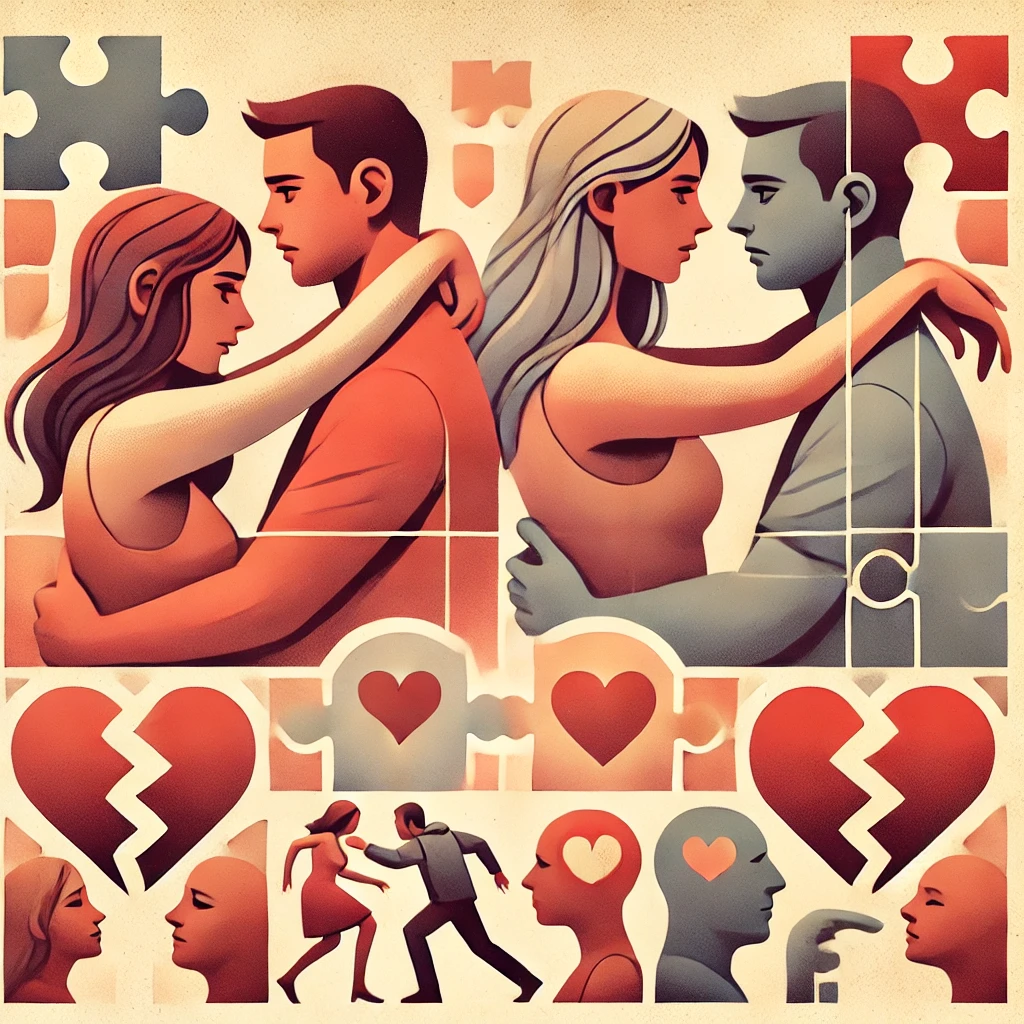
Why do we keep falling for the same type of person—sometimes even when we know it’s not going to end well? It might have less to do with fate and more to do with how your brain was wired in childhood.
Attachment theory offers a powerful lens for understanding romantic attraction. It explains why you might crave closeness, push people away, or keep finding yourself in on-again-off-again relationships. In this post, we’ll break down the different attachment styles, how they shape who you’re drawn to, and what you can do to change patterns that no longer serve you.
What Are Attachment Styles?
Attachment styles are patterns of emotional bonding we develop early in life—usually by age three—based on how our primary caregivers responded to our needs.
Psychologist John Bowlby first developed attachment theory, and Mary Ainsworth later expanded it with her famous Strange Situation study, which identified four main types of attachment:
- Secure – Feels safe and confident in relationships.
- Anxious (Preoccupied) – Craves closeness but fears abandonment.
- Avoidant (Dismissive) – Values independence and tends to pull away emotionally.
- Fearful-Avoidant (Disorganized) – A mix of anxiety and avoidance; wants love but also fears it.
These styles stay with us into adulthood and heavily influence how we relate to romantic partners.
How Attachment Styles Affect Adult Relationships
Each style shows up in relationships in distinct ways:
- Secure: Comfortable with intimacy and autonomy. They trust their partners and handle conflict in a healthy way.
- Anxious: Often overthink, seek constant reassurance, and feel threatened by distance. Emotional ups and downs are common.
- Avoidant: Struggles with vulnerability, avoids deep emotional connection, and often appears distant.
- Fearful-Avoidant: Sends mixed signals—desperately wants love but shuts down or self-sabotages due to fear of rejection.
Attachment style affects how you communicate, deal with conflict, and express love. It’s not about blaming your past—it’s about understanding how it shapes your present.
Why You’re Attracted to Certain People
Have you ever been drawn to someone who was emotionally unavailable, even though it always ends in heartbreak? There’s a reason for that.
People are often subconsciously attracted to partners whose attachment style “fits” with their own—especially in dysfunctional ways. Common examples include:
- Anxious + Avoidant: A classic but painful match. The anxious partner chases connection while the avoidant partner pulls away. This dynamic creates a push-pull cycle that can be addictive but damaging.
- Fearful-Avoidant: May find themselves stuck in chaotic relationships, feeling both desperate for and terrified of intimacy.
We’re often trying to resolve unresolved childhood wounds through our romantic relationships—a concept psychologists call repetition compulsion. Your brain wants to “fix” the past by picking partners that mirror it.
The Risks of Mismatched Attachment Styles
When attachment styles clash, the emotional toll can be heavy. Here’s what it can look like:
- Constant misunderstandings and communication breakdowns
- One person feeling smothered while the other feels abandoned
- High-stress cycles of pursuit and withdrawal
- Lack of emotional safety, leading to burnout or emotional shutdown
Signs you may be in an attachment mismatch:
- You’re always the one initiating contact or plans
- You feel anxious when they don’t text back quickly
- You avoid tough conversations out of fear they’ll leave
- You feel drained, confused, or unseen in the relationship
Can You Change Your Attachment Style?
Yes—and that’s the good news.
While your attachment style is shaped early in life, it’s not set in stone. The brain is flexible. With effort and the right support, you can move toward a secure attachment style.
How to start:
- Therapy: Especially Emotionally Focused Therapy (EFT), Cognitive Behavioral Therapy (CBT), or EMDR.
- Self-awareness: Identify your patterns and triggers.
- Healthy relationships: Being with a securely attached partner can help “re-train” your emotional responses.
- Boundaries & communication: Learn to express needs calmly and set healthy limits.
Books like Attached by Amir Levine and Hold Me Tight by Dr. Sue Johnson are great resources for deepening your understanding.
How to Date Smarter Based on Your Attachment Style
Knowing your style helps you make better choices in love. Here’s how:
If You’re Anxious:
- Work on self-worth outside of the relationship
- Avoid partners who are emotionally unavailable
- Don’t chase—if they’re right for you, you won’t need to
If You’re Avoidant:
- Practice opening up about your feelings, even when it’s uncomfortable
- Remind yourself that needing someone isn’t weakness
- Date people who respect your space but also express emotional needs clearly
If You’re Fearful-Avoidant:
- Therapy can be especially helpful here
- Work on building emotional safety with yourself first
- Avoid emotionally volatile relationships—they reinforce fear
If You’re Secure:
- You’re in a good spot—just be mindful of your boundaries and don’t get pulled into drama from more insecure partners
Final Thoughts
Your attachment style doesn’t define your destiny—but understanding it can change your relationship future. Instead of repeating the same old patterns, you can start choosing partners—and behaviors—that align with a healthier, more secure love.
The first step is awareness. The second is action.
If you’re tired of getting stuck in the same emotional loop, it might be time to look inward—not for blame, but for clarity.



